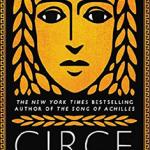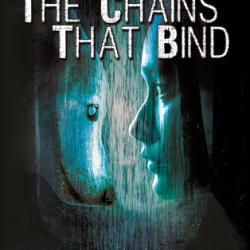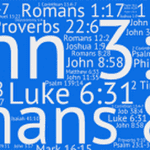
When we left off in Part 1 of this article, I was breaking down and explaining how the process of publishing a book works. I’d made it through the copyediting process. So with all of those preliminary expenses out of the way, now the book actually goes to print.
Printing
Deciding how many copies to print is probably a publisher’s biggest (and most risky) business decision. Every copy is an investment, but the more copies you print, the cheaper they are to print per unit. Most Pagan books are relegated by necessity to a small print run because it’s a small market. My first print run for The Witch’s Eight Paths of Power was 5000 copies. Relatively speaking that’s a pretty large run for a first time Pagan author. By comparison most sci-fi pulp novels run about 10000 copies. Keep in mind that Weiser/Red Wheel, while one of the three largest metaphysical publishers in the world (one of which, Hay House, doesn’t do Pagan books,) is still small enough that I regularly chat with the head of the company.
Two hard-copy proofs of the book are sent to me as the author review. If there’s a “stop the press!” kind of emergency, now is the time to act, though that’s definitely the exception, not the rule.

Turns out that in my case, though it wasn’t discovered in my proofs, there was a “stop-the-press” sort of emergency. Amazon outsourced some of the Canadian printing and a handful of people in the Edmonton area who bought “Eight Paths” on Amazon ended up with some of the pages printed twice and others missing. So, those kind of mistakes happen and they cost money, and so do the replacement copies that were sent to those customers by Weiser for free (as does the shipping.) I also receive fifteen gratis copies as the author of the book.
In self-publishing this is where the big expense comes in. If you get the book printed yourself it costs you money directly out of your own pocket; and like with professional publishing, the more you print at once, the cheaper it is. Not having the cash to do this is the most common reason people choose a professional over self-publishing (rather than inability to secure a professional publisher, though that’s also a factor). It’s expensive. Usually the individual unit cost is considerably higher than it is for a professional due to the smaller volume. An author needs to weigh the prospective advantage of the wide distribution of a professional company against the individual profit margin per unit. But, in that case she is likely to be the primary vendor of her own books; self-published books do not end up in Barnes & Noble unless they’re taken up by a larger publisher later.
A writer can also choose a print-on-demand service (Lulu and CreateSpace do this, for example); in which case, she only pays for the books that are actually printed. She still has all the costs up to copyediting to deal with. The disadvantage of this is that an author doesn’t get impulse buys that way. She has no books to take to festivals to sell unless she buys them herself and marks them up from there; and she certainly isn’t going to see any of her books in a bookstore this way. (There are exceptions to that last statement for self-published authors, but I’ll get into that in the Retailing section.)
Note that all the same sorts of mistakes that can happen in professional publishing also happen for self-published authors, and they also cost.

Promotion
This is probably the hardest part of book publishing, and the most valuable service you get out of a professional publisher. Weiser’s promo person’s name is Erin and she’s awesome. She’s probably the person I speak to the most at Weiser. Her job is to promote my books. Now, the fact is that she will spend more time and effort on the “bigger names” in the author stable because that’s just good business for the company, but I have never been dissatisfied with her work on my behalf. She has built up a rapport with a lot of important people in the field and she gets them to take a look at my book and to book interviews with me. I’ve been on several widely-syndicated paranormal-related radio programs now and more than a few podcasts thanks to her efforts. She’s the one who retweets my tweets and she’s the one who sends review copies to reviewers. She’s also the one that got me my original gig here at Patheos.
And she has to get paid a living wage. And that costs money. And so do the review copies she sends all over the place. And so do the promotional materials that are printed; usually postcards, but sometimes posters and bookmarks as well.
A writer still has to do a lot of her own promotion also. I took the time to contact people I knew in the Pagan world who had blogs and podcasts and asked them to have a look at “Eight Paths.” I paid the postage to ship promotional postcards to metaphysical shops all over Western Canada to see if they wanted to host a workshop or a book signing. I also paid for my Western Canadian book tour entirely out of my own pocket; which is why it was only Western Canada. The workshops I offered along the way were attempts to recoup some of the expenses. And sometimes the retailer had books to sell; other times I had to have the books and pay them a percentage of my sales.
A self-published author is entirely responsible for her own promotion and doesn’t have the connections a professional publisher’s PR person does. All expenses have to be paid for out of her own pocket.

Distribution
At this stage the books are distributed. Publishers ship copies of the books to wholesalers, who then sell to the retailers. One of the reasons why Amazon, Chapters, Barnes & Noble and so forth can offer books so much cheaper than anyone else can is because they serve as their own distributors. Also, they get you to pay for the shipping so they don’t have to factor that into their profit margin. So keep that in mind when you’re buying from them. Distributors are more often small companies with little warehouses and two employees, one of whom manages the office and the phone calls, the other of whom manages the warehouse. They both have to be paid too. And there are also big distributors such as Penguin LLC, who is the distributor most general professional bookstore deal with, and they have employees. So do the metaphysical distributors who take up Pagan books, such as New Leaf, Azuregreen, Dempsey or Quanta.
Obviously this stage is not necessary for a self-published author, but the smaller print run usually means that by now the costs of producing each book unit are about the same regardless of whether you’ve self-published or not.

Retailing
And at last, the book gets to the bookstore.
Now here’s something I bet you don’t know. The retail price of a book is fixed by the publisher when it is printed. A retailer pays 40% less than whatever the cover price says per book. The retailer also pays for the shipping.
Now let me tell you something else: when I was the owner of a metaphysical store, if that was my profit margin on anything else that I would be selling, I wouldn’t carry it. The value vs. the risk of owning (and being stuck with) the stock just wasn’t worth it to me in order to make my nut. You want to know why nobody but big chain bookstores and department stores are selling books anymore? That’s why.
Most big chain stores have a deal with the distributors by which they may return unsold copies of the book after a certain period of time. They pay the shipping for this as well. This is why you see that notice in some books that says “not valid for resale if cover is removed” and the like; because they rip the cover off and send it back, and then it is disposed of. This seems to be less common than it once was due to outcry about waste (not expense) and that’s when you’ll find severely discounted books just to clear out stock in bargain bins and dollar stores. All of those returned copies represent a loss; which is why promotion is so important.
Small bookstores aren’t usually given this option. As a result they won’t buy more than a handful of any given book without a damn good reason (like the author coming to their store to sign them.) Libraries generally can buy books directly from the distributor for a discounted rate.
A writer can also buy her own book from the publisher and sell it herself; usually at a book signing event, a speaking engagement, a festival or a workshop. She pays about what the retailer does, sometimes a little less. For most authors, those sales are often the only money they ever see.
A self-published author has a much bigger hill to climb here. Big retailers won’t carry her unless she’s a runaway hit; and small retailers want to sell her books on consignment rather than buying them. I had a few retailers that I approached try to get that same consignment deal; which is an impossibly small margin when I have to pay the wholesale cost of the book! This is one of the few situations in which a self-published author has a small advantage. This is why I wasn’t seen in some of the cities where people expected that I would appear on my tour (like Vancouver.) I had the luxury of turning them down because you can find “Eight Paths” in big book stores (thanks to my publisher) but most authors are stuck with these sorts of brutal terms if they want to sell their book anywhere. And often you’re not seen as a “real author” until your book is in a bookstore.

Royalties
Which is the only real point of publishing a Pagan book; professional cred, which you can then broker into public speaking gigs and the like, because you aren’t really making any money on the book. As a writer I get paid 7% of each retail copy sold and 15% of each e-book.
I’ve had a pretty good print run; in the six months in which “Eight Paths” has been available I’ve sold about 2000 of those 5000 copies. I’ve almost made back my advance now. That’s actually hugely successful in this field; a much more experienced Pagan author told me never to expect a dime more in royalties than I got paid on my advance! It’s even possible on my next royalty statement that I might actually get a cheque for a couple hundred bucks.
Writers do not receive a dime in royalties, incidentally, for off-sales or second-hand book sales. We were assumed to have made our money on the first round.
So in conclusion, as I said in response to a comment on the first article in this series, “The fact is that everyone involved in the process of writing and publishing Pagan books are working people who are also struggling to survive on what is often a lot less than minimum wage; which is the crux of my article. It’s not like shoplifting from Wal-Mart. It’s like taking a cheque out of your neighbour’s mailbox.”
Want to get all the latest updates first? Like the Between the Shadows Facebook page! And don’t forget to check out the Patheos Pagan channel for some great articles.
















